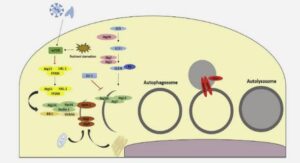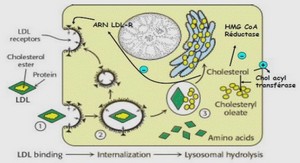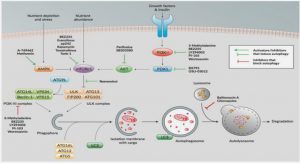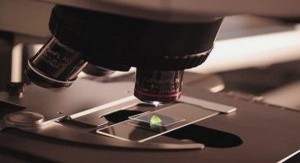The shallow waters of coastal tropical waters are dominated by colorful formations impressive for their variety of motifs and forms–coral reefs. Stretching over a vast region of the tropics, coral reefs form the most biodiversed marine habitats, which represent 5% of aIl marine species (approximately 91 000 species) (Karlson 1999). They are also c1assified among the most productive ecosystems of the world, fixing approximately 700 billion kilograms of carbon annually. In addition, reefs protect adjacent coastal areas from erosion, have a significant economical importance for human populations living in proximity and provide a vital and important source of protein to hundreds of millions of people .
While other reef organisms may contribute to the reefs consolidation, hermatypic corals (phylum Cnidaria, c1ass Anthozoa) are responsible for building the massive biogenic structures that span entire reefs, islands and barrier reefs over the past 200 millions years. Hermatypic corals are colonial animaIs that live in symbiosis relationships with dinoflagellate unicellular algae, thezooxanthellae, situated in their gastrodermic tissue. The coral structures and architectures form three dimensional niches-home to many species of marine invertebrates and fish.
Despite the long history and geological persistence of coral reefs, human activities and anthropogenic pressures have significantly altered their ability to cope with natural disturbances and to maintain themselves (Nystr6m et al. 2000, Pandolfi 2002). Natural stresses, such as rising sea temperatures resulting in bleaching events (Douglas 2003, Obura 2005, Graham et al. 2007), outbreak of coral diseases (Richardson 1998), along with human stresses such as increased load of sediment and pollution (Aleem 1990, Guest et al. 2007), recreational activities, destructive fishing methods and over-fishing and collection of animaIs for the omamental trade (Lovell and McLardy 2008), have pushed reefs beyond their adaptive capacity (Bell et al. 2006). Worldwide coral reefs are declining at an unprecedented rate (Lesser 2004) and the massive degradation over the past three decades has led in many cases to permanent shifts in reef communities, modifications of the abiotic environrnental conditions and substantial loss of reef areas (Rinkevich 2005b, Aronson and Precht 2006, Hoegh-Guldberg 2006). Alarmingly, 20% of the world’s coral reefs have been destroyed and show no immediate potentialities of recovery, 24% are under a severe risk of collapse due to human pressures and 26% face the same threat of collapse in the long run (Edwards and Gomez 2007). Wilkinson (2000) predicts a decline between 40 to 60% of the world’s reefs during the next 50 years, unless proper steps are taken. Not only are the biological communities of coral reefs threatened, but also millions of people in over 100 countries who depend on this ecosystem for food and income.
In order to impede the reefs’ further decline and to conserve this habitat, restoration measures must be taken. The objective of restoring an ecosystem is to preserve the original ecosystem, in addition to the replacement of lost habitat or destroyed populations (Rinkevich 2005b). Restoration of a coral reef can be of a passive form. Passive restoration is characterized by acts that do not directly interfere with reef organisms, but concentrates on imposing of traditional management efforts, such as no-use zone, imposing of legislation, etc. By doing that, passive restoration creates the appropriate conditions for reef self-healing through natural processes. On the other hand, active reef restoration requires human intervention (i.e., coral transplantation, coral farming, etc.) and is appropriate anywhere wh en recovery needs to be accelerated in order to protect threatened biodiversity or when natural recovery needs assistance due to a profound change in ecological conditions and reef resilience (Kauffman et al. 1997, McIver and Starr 200 1, DellaSala et al. 2003, Mansourian et al. 2005).
It is becoming more and more evident that degraded reefs rarely recover naturally from human induced changes without any intervention (Bowden-Kerby 2004, Rinkevich 2005b). In many cases the physical integrity of the reef is damaged, rendering the substrate inappropriate for new recruitment (Fox and Pet 2001). Marine Protected Areas and « no use zones » are successful in reducing recreational and fishing pressures but are insufficient in countering current-carried pollution and poor to no natural coral recruitment (example of Eilat’s « no-use zone », Epstein et al. 1999, Epstein et al. 2005). The rate of coral recruitment is variable, can take up to several years and can be of limited dispersal range for sorne species, impacting damaged areas’ diversity (Soong and Chen 2003, Rinkevich 2005a). The anthropogenic (usually chronic) damage acts in the short term, whereas the regeneration of the reef, characterized by a large post-settlement mortality and slow coral growth, is a long term procedure; these two scalesneed to be bridged (Sato 1985, Soong and Chen 2003). In addition, as was pointed out by Baums (2008), while corals have certain abilities to adapt to changing environmental conditions, their adaptation responses towards human disturbances (such as dynamite fishing) seem improbable, regardless of the time frame. In light of these facts, it is becoming c1ear that, in addition to conservation and protection, active restoration is now crucial to preserving tl:tis highly diversified and productive ecosystem.
Although active reef restoration is still in its infancy (especially in comparison with forest restoration), various restoration methodologies were employed to address different causes of damage. In cases where the quality of hard substrate was damaged due to ship grounding or blast fishing, primary efforts usually concentrated on consolidating the bottom or adding new hard substrate for colonization (Clark and Edwards 1994, Fox et al. 2003, Schrimm et al. 2006). While this addresses the physical characteristics of the system, rehabilitating the substrate alone is not sufficient to ensure the reestablishment of the habitat’s ecological functioning.
Artificial reefs have been widely used as a restoration tool, especially when fish populations were targeted and are usually involved in projects that help promote public awareness (Thailand: Yeemin et al. 2006, Japan: Akakura et al. 2006, French Polynesia: Schrimm et al. 2006. Atlantic Ocean: Koenig 2001, Seaman 2007, Florida: Fahy et al. 2006, and examples reviewed in Spieler et al. 2001). Although artificial reefs have the ability to shift sorne pressure away from the natural reef by creating new dive sites (Leeworthy et al. 2006) and can offer a punctual additional substrate for settlement, they are rarely considered as a promising restoration approach by coral reef restoration ecologists (Abel son 2006, Rinkevich 2005b). An artificial reef can mimic sorne of the characteristics of a natural reef, but nonetheless, it remains artificial and the community development on the artificial reefs can hardly be predicted or controlled. Even after a long time, their communities rarely resemble the natural reef species’ composition (PerkolFinkel and Benayahu 2005, Perkol-Finkel et al. 2006). Artificial reefs can also reduce the larval supply to natural reefs (Abelson 2006) and cannot counter the problem of lack of seeders stock. Therefore, it could be more appropriate, in the context of coral reefs, to refer to them as « enhancers » rather than « restorers » (Svane and Petersen 2001) .
Another common approach, one that is often used in cases of coastal development projects or at locations that have been damaged by’ ship grounding, is reattachment and translocation. Threatened or broken colonies are translocated to adjacent un-impacted reefs. When possible, at ship grounding localities or at sites damaged by storms and hurricanes, remaining corals are secured and fixed to hard substrate to prevent their dispersion by currents and water movement that will lead to tissue abrasion (reviewed in Rinkevich 2005b, Bruckner and Bruckner 2006).
By far, the most commonly used approach for active reef restoration has been the transplantation of corals on artificial or natural remaining hard substrates at denuded areas. The addition of live coral colonies aims to reinforce or to re-establish the poor local coral community and thus accelerates or enables recovery. Two main practices were used: the transplantation of whole coral colonies and the transplantation of coral fragments.
In the first approach, whole coral colonies are taken from healthy localities and transferred to degraded sites. Variable degrees of success were reported from such efforts. Bouchon et al. (1981) transplanted coral heads on an artificial reef in the northern Gulf of Aqaba (Red Sea, Jordan). After 1 year, 14% of the transplants were dead and 21 % of the colonies were decaying. Schrirnrn et al. (2006) transplanted colonies from nearby donor sites in French Polynesia and secured them onto concrete blocks or simply placed them in between the blocks. The survivorship after 2.3 years varied between genera from 100% to 73%. A month later, due to phytoplankton bloom, survivorship dropped dramatically to an average of 38%. In contrast, Clark and Edwards (1995) reported 51 % survivorship of colonies transplanted on Armorflex mats in the Maldives after 2.3 years, with most of the mortality occurring during the first seven months of the experiment. They also suggested a trade-off between growth rates and survivorship of the transplants and concluded in a follow up publication that even when transplants are carefully handled they tend to have higher mortality rates than undisturbed colonies (Edwards and Clark 1998). In Japan, Akakura et al. (2006) transplanted colonies from a nearby harbor on concrete blocks next to a breakwater. They found varying survival rates between coral species, 80% to less than 20% after 1.5 years.
1. INTRODUCTION |





